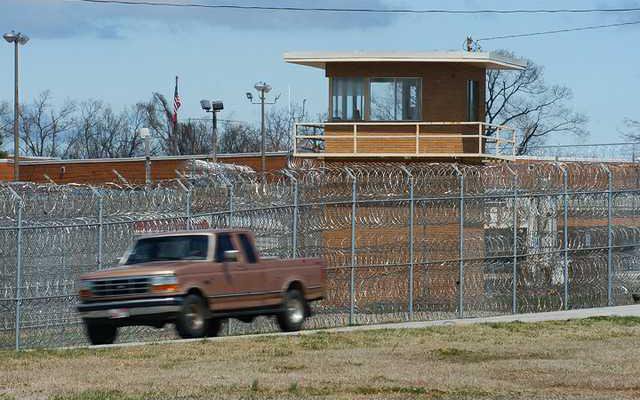Georgia’s booming prison population may be leveling off.
A new report by the Pew Center on the States says for the first time in 38 years, the U.S. prison population declined. But in Georgia, growth of the country’s sixth-largest prison system continued in the last year, albeit at a rate of about 1 percent, far off the double-digit pace of years past that was spurred in part by stricter parole policies.
As of February, there were 53,760 inmates in Georgia prisons, compared with 53,187 the same time last year and 54,455 in February 2008.
“After a decade of very steep growth, we seem to be entering a period where it is leveling off to some extent,” said Timothy Carr, a senior researcher for the Georgia Department of Corrections.
The cause is open to speculation. Some experts believe that Georgia, which has a corrections budget of $1.1 billion, may finally be feeling the full brunt of a state parole board policy requiring inmates serve 90 percent of their sentences for certain criminal offenses.
While new admissions to state prisons have remained steady at around 20,000 per year for the past few years, the parole board has in recent years increased the number of inmates released on parole, according to figures from its most recent annual report. In 2008 the board paroled 12,938 inmates, compared with 9,502 in 2007 and 8,457 in 2006.
Sheree Moore, spokeswoman for the Georgia State Board of Pardons and Paroles, said the board has not changed its philosophies or approach.
“We’re still very conservative in our releases,” Moore said. “Although the board is looked at as a stabilizing factor, we don’t set our releases based on the number of those that are incarcerated. We look at each case individually.”
Moore said while the state inmate population is “looked at, the main consideration is public safety.”
“Of course we are aware of the prison space, and we do work hand in hand with corrections, but we’re trying to release those who don’t pose a threat to public safety.”
Moore noted that Georgia does not have a “good time” or “earned time” policy for prisoners. It is the only prison system in the nation that does not award some time off for good behavior.
In some states, alternatives to prison for nonviolent offenders have led to decreases in inmate counts. Texas, which saw a decrease of 1,257 prisoners in 2009, has created a network of residential and community-based treatment and diversion programs.
“A lot of states are finding ways to hold parole and probation violators accountable for breaking the rules without jamming them back into $25,000-a-year, taxpayer-funded prison cells,” said Adam Gelb, the director of the Pew Center’s public safety performance project. “States like Texas, Kansas and Mississippi have taken more aggressive steps to limit the cost to taxpayers while protecting public safety.”
On the local level, judicial officials believe newer treatment and accountability courts are making some difference in the number of nonviolent Hall and Dawson County offenders going off to prison.
There are 785 people participating in the Northeastern Judicial Circuit’s five treatment courts for offenders with substance abuse or mental health problems.
“The alternatives we have to incarceration probably have some effect on the overall prison population,” said Reggie Forrester, the trial court administrator for the Northeastern Judicial Circuit. “We can’t calculate the effect it has on the population, but we do know that the majority of those 785 would otherwise be in jail for one reason or another.”
And intake for the prison system, Forrester noted, “begins in the jails.”
Gelb said it’s too early to say whether the national inmate population decrease seen this year will lead to a sustained trend.
“The political and policy environment on this issue has changed dramatically just in the past five years,” Gelb said. “Policy-makers are realizing there are research-based strategies that can protect public safety at a fraction of the cost of building new prisons.”

